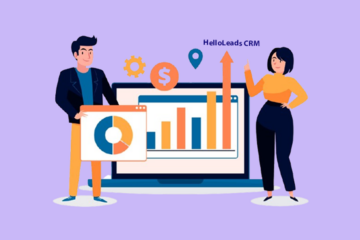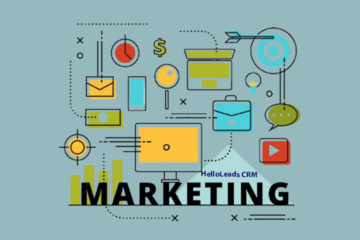
In the competitive world of sales, time is a precious commodity. As a sales professional, your ultimate goal is to close deals and boost revenue for your company. However, not all leads are created equal, and focusing on the wrong leads can result in wasted time, effort, and resources. That’s where lead qualification comes in.
By understanding the science behind lead qualification, you can stop wasting time on dead-end leads and start focusing on the ones who are most likely to convert. And when you’re able to close more deals and meet your sales goals, you’ll feel a sense of accomplishment and pride that will fuel your motivation to keep going. So let’s dive into the science of lead qualification and unlock the potential for successful sales.
In this small business guide, we will walk you through what is lead qualification, why is qualifying leads considered so important? what is the science behind it? and how lead qualification works?
What is Lead Qualification?
Lead Qualification is the process of evaluating a prospective customer’s interest, intention and potential to purchase. In other words, it is finding out whether a lead is worth investing time, money and resources in.
It can be achieved by analysing leads and the key aspects of their company – like their goals, challenges, and requirements etc., from which you can determine whether they will be a good fit for your business.
Why Lead Qualification is Important?
Qualifying a lead is important because not every lead is worth pursuing i.e. every person who expresses his/her interest in a product or service is ready to make a purchase. Some leads may not have a budget, might not have a decision-making power or need not be interested in the product or service offered. That’s why successful businesses use lead qualification process to determine which prospects are the best sales targets.
Lead qualification is a critical part of any sales strategy as it saves time and resources. Here are a few main reasons why lead qualification is important:

- Focus on high-quality leads: Qualifying leads helps in separating high-quality leads from low-quality ones who are unlikely to convert. By focusing on high-quality leads, you can allocate your resources and efforts in the right direction.
- Timely follow-ups: Qualifying leads helps in identifying the most interested prospects, allowing sales team to follow up with them quickly. Delayed follow-ups usually result in lost opportunities.
- Better conversion rates: By qualifying leads, sales team can target the right audience with personalized messaging, leading to better conversion rates.
The above information might sound simple, but it has a lot of science behind it. The science of lead qualification involves using data-driven methods to evaluate and score leads based on specific criteria.

The criteria for a qualified lead may vary and depends on the product/service and industry. Here are some key factors that you should consider when qualifying leads:
- Demographics: Consider factors like the lead’s age, gender, location, and job title. Demographic data can give you an idea of your ideal customer.
- Behavior: Look at the lead’s behavior on your website or social media channels. How often do they engage with your brand? Do they consistently interact with your content?
- Needs: Understand the lead’s likes, dislikes, pain points and the problems they are trying to solve. This will help you tailor your message to their specific needs.
- Budget: Evaluate the lead’s budget and determine if they have the financial resources to purchase your product or service.
Using these criteria, you can assign scores to each lead and prioritize those with the highest scores. This allows your sales team to focus on leads who are more likely to convert, and avoid wasting time and resources on low-quality leads.
Who qualifies leads?
The task of qualifying leads is usually done by sales department in any business. But, as an entrepreneur or startup founder of a business, it is up to you to define your target audience and create buyer personas that would best suit your product or service. You can then work with your sales team to sharpen their focus on the identified leads and enable them to convert more leads into loyal customers.
How to qualify your leads effectively?
Here are the main steps to follow to build an efficient sales qualification framework:
- Define your buyer persona: The first step in qualifying leads is to define your ideal customer. You need to identify your buyer persona – the group of people who are most likely to be interested in your product or service. Creating a buyer persona helps to ensure that you are targeting the right prospects.
- Identify the information that matters: Once you have created your buyer persona, you need to gather data that is most important to your sales process. This includes demographic data, job titles, company size, industry and budget etc. This can be done through various channels like lead capture forms, social media, email marketing, surveys, phone calls, WhatsApp enquiries and more.
- Ask the right questions: Once you have collected the necessary data, you need to analyze it to determine a prospect’s needs, interests, behaviors and pain points. This process of analysis involves asking the right questions and identifying patterns in the data. A few examples of right questions to ask your leads:
- What issue do you hope to resolve?
- Do you currently have an alternative solution to this issue?
- If not, why are you attempting to fix this issue at this time?
- What objectives do you hope to accomplish with this solution?
- What time frame do you think is ideal for implementation?
- Who would make the final choice about this purchase?
- What is the estimated cost of this solution?
- Use scoring system: You need to score your leads based on their information, engagement level and behavior etc. This helps in prioritizing the most interested prospects for follow-ups. Depending on your lead qualification process, you might also need to verify the information provided by prospects to avoid wasting resources on low-quality leads.
- Validate your Leads: Finally, you need to validate your leads to ensure that you are making the most of your resources by focusing on high-quality leads and to ensure that they are a good fit for your company. This step involves checking if they meet the following basic criteria:
- Identify the right contact: It is essential to identify decision-makers in the company who you are targeting. It saves a lot of time and resources if you reach out to the person who can make the purchase decision rather than someone who might not have that authority.
- Evaluate the need: Prioritize leads who are on the lookout for solutions that your product or service can provide. This would help you sell more efficiently and deliver better value to your customer.
- Budget: Evaluate the budget of the company and see if it corresponds to your services’ cost of ownership. If budget and costs line up, your sales efforts would be more efficient as that’s where the client return on investment (ROI) will be the highest.
- Timing: Each business may follow its own schedule when deciding whether to buy a new product/request a new service; some might do so right away, while others would put it off until later. So, one need to understand a company’s timeline as it depends on various factors like their priority and decision-making process etc.
In addition to these factors, it is important to track and analyze your lead generation and qualification efforts continuously. This will help you refine your qualification criteria and improve the quality of your leads over time.
Here are some best practices to follow when implementing lead qualification in your sales process:
- Develop a clear set of qualification criteria: Clearly define your ideal customer profile, and determine the key factors that make a lead more likely to convert.
- Use automation tools: Use CRM tools that help to automate your lead qualification process. This will help you save time and ensure consistency in your lead scoring. Also, you can track the lead’s activity by measuring how many times they visited your website, clicked on newsletter or marketing email links or reached out to you with queries.
- Track and analyze your results: Regularly review your lead generation and qualification efforts, and make adjustments as necessary. Use data to identify areas for improvement and refine your qualification criteria over time.
In conclusion, lead qualification is a critical step in the sales process that can make or break your business. By incorporating the science of lead qualification into your sales strategy, you can improve the quality of your leads, increase your sales conversion rates, and ultimately drive business growth. Don’t leave lead qualification to chance – take a data-driven approach to identify high-quality leads and focus your efforts where they matter most. By doing so, you would not only reduce wasted resources and increase the chances of conversion but also deliver better value and quality to your customers.
Share this blog :











